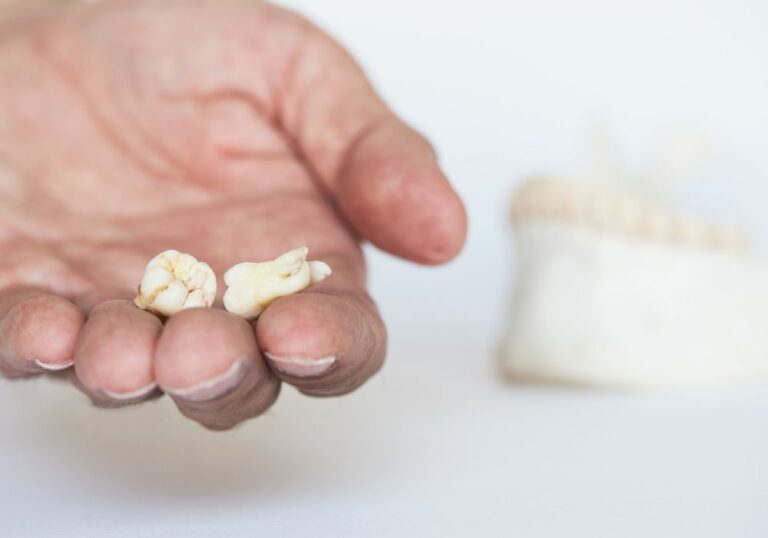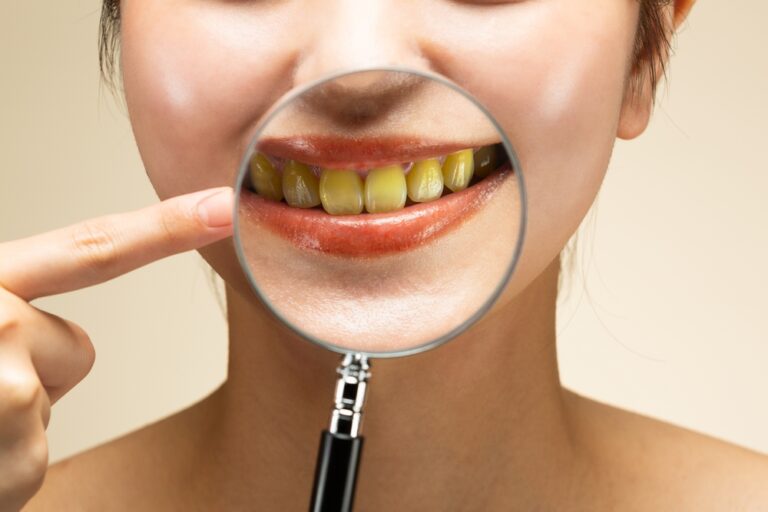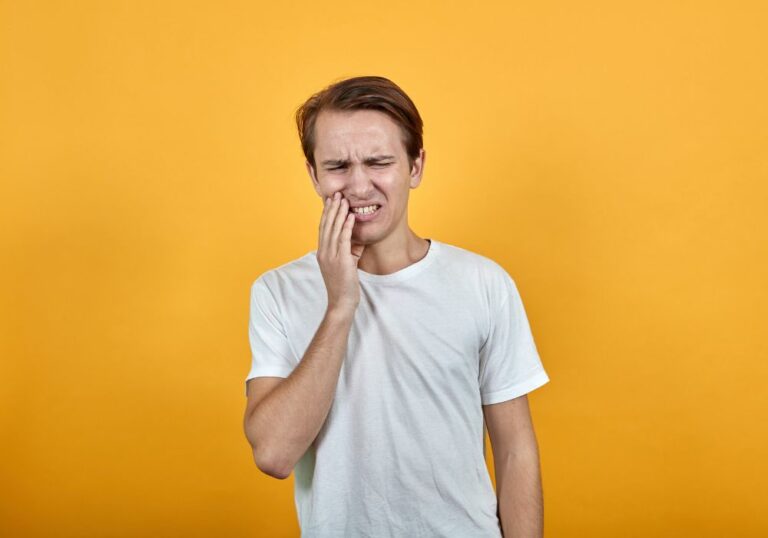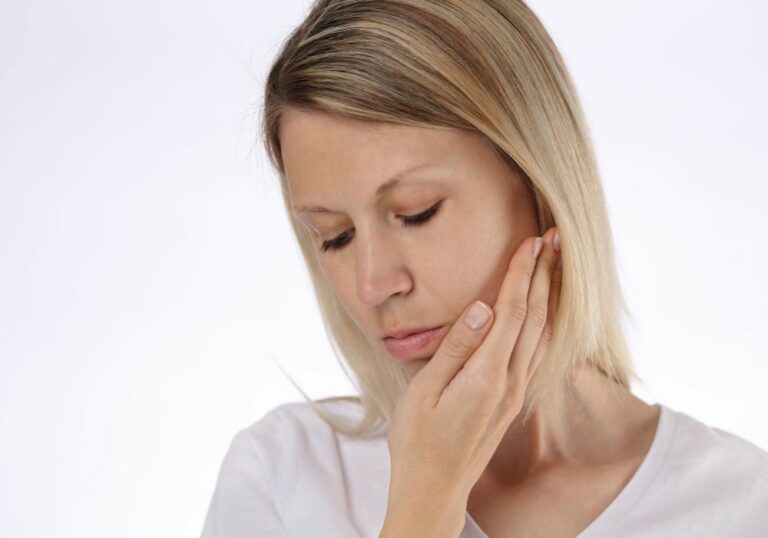Have you ever wondered if you’re supposed to show your teeth when you smile? It’s a common question that many people have, and the answer isn’t always straightforward. Some people feel self-conscious about their teeth and prefer to keep their lips closed, while others feel more confident with a full-toothed grin. In this article, we’ll explore the different factors that can influence whether or not you should show your teeth when you smile.
One of the most important factors to consider is the context of the situation. For example, if you’re taking a formal headshot for work, a closed-lip smile might be more appropriate. On the other hand, if you’re at a social gathering with friends, a big toothy grin might be more fitting. Additionally, cultural norms can play a role in how people perceive toothy smiles. In some cultures, showing your teeth when you smile is seen as a sign of happiness and friendliness, while in others, it may be considered impolite or even aggressive.
Ultimately, the decision of whether or not to show your teeth when you smile is a personal one. It’s important to consider your own comfort level and confidence, as well as the context of the situation. In the following sections, we’ll delve deeper into some of the factors that can influence your decision, including the aesthetics of your smile, the shape of your lips, and the role of cultural norms.
Understanding Smiles

When it comes to smiling, there are many factors to consider. Smiling is a universal language that can convey a range of emotions, from happiness and joy to sadness and discomfort. However, one question that often arises is whether you should show your teeth when you smile. Let’s explore this topic in more detail.
The Social Aspect
In many cultures, showing your teeth when you smile is considered a sign of warmth, friendliness, and openness. Smiling with your teeth can also indicate that you are happy and confident. However, there are some situations where showing your teeth may not be appropriate. For example, if you are in a formal or professional setting, a closed-lip smile may be more appropriate.
The Biological Aspect
From a biological perspective, smiling with your teeth can also have benefits. When you smile, your brain releases endorphins, which can boost your mood and reduce stress. Additionally, smiling can make you appear more attractive and approachable, which can help you build better relationships with others.
However, it’s important to note that not everyone feels comfortable showing their teeth when they smile. Some people may feel self-conscious about their teeth or may have dental issues that prevent them from smiling with their teeth. In these cases, it’s perfectly acceptable to smile with your lips closed or to find other ways to express your emotions.
In conclusion, whether or not you show your teeth when you smile is a personal choice that depends on the situation and your own comfort level. Showing your teeth can be a sign of warmth and confidence, but it’s not always necessary or appropriate. Ultimately, the most important thing is to be authentic and true to yourself when expressing your emotions through your smile.
The Role of Teeth in Smiling
When it comes to smiling, teeth play a significant role in how the smile is perceived. Here are two ways in which teeth play a role in smiling:
Aesthetic Appeal
Teeth contribute to the aesthetic appeal of a smile. A smile that shows teeth can be perceived as more attractive than a closed-lip smile. The reason for this is that teeth add an element of brightness and symmetry to a smile. Straight, white teeth can enhance the overall appearance of a smile and make it more visually appealing. In contrast, discolored or crooked teeth can detract from a smile’s aesthetic appeal.
Expressions of Joy
Teeth are also an essential part of expressing joy through a smile. A smile that shows teeth can convey a sense of happiness and positivity. When you smile with your teeth, it can also make you appear more approachable and friendly. Smiling with your teeth can help to create a positive atmosphere and make those around you feel more comfortable.
In summary, teeth play a crucial role in how a smile is perceived. They contribute to the aesthetic appeal of a smile and can help to express joy and positivity. Whether you choose to show your teeth when you smile is a personal choice, but it’s worth considering the impact that your teeth can have on how your smile is perceived.
Cultural Differences in Smiling

In different cultures, the meaning of a smile can vary. For example, in some cultures, showing your teeth when you smile is considered rude or aggressive. In contrast, in other cultures, showing your teeth is seen as a sign of friendliness and warmth.
Research has shown that Westerners tend to focus on the mouth when interpreting a smile, while Easterners pay more attention to the eyes. A study found that Chinese and Japanese people evaluate the role of the mouth and eyes in smiles differently from Westerners. Easterners tend to look more at the eyes to determine if a smile is genuine or not, while Westerners look more at the mouth.
In some cultures, smiling is not as common as it is in others. For example, in some Asian cultures, people may not smile as much in public because it can be seen as a sign of weakness or immaturity. In contrast, in some Latin American cultures, people may smile more often as a way to show friendliness and warmth.
It’s important to be aware of these cultural differences when interacting with people from different backgrounds. For example, if you are visiting a country where smiling with teeth is not common, you may want to adjust your behavior to avoid coming across as rude or aggressive. Similarly, if you are from a culture where smiling is common, you may need to adjust your expectations when interacting with people from cultures where smiling is less common.
The Psychology Behind Showing Teeth When Smiling
When it comes to smiling, there are different ways to show your teeth or not. Some people feel more comfortable smiling with their teeth showing, while others prefer to keep their lips closed. But what is the psychology behind showing teeth when smiling? Let’s explore that.
Perception of Confidence
One reason people may choose to show their teeth when smiling is that it can convey a sense of confidence. Research has shown that people who smile with their teeth showing are often perceived as more confident and self-assured than those who keep their lips closed. This is likely because showing your teeth when smiling requires a certain level of vulnerability and openness, which can be interpreted as a sign of confidence.
Perception of Trustworthiness
Another reason people may choose to show their teeth when smiling is that it can convey a sense of trustworthiness. Studies have found that people who smile with their teeth showing are often perceived as more trustworthy and sincere than those who don’t. This is likely because showing your teeth when smiling can make you appear more approachable and friendly, which can increase feelings of trust and comfort.
It’s important to note that these perceptions can vary depending on cultural and individual differences. In some cultures, showing your teeth when smiling may be seen as inappropriate or even aggressive. Additionally, some individuals may feel self-conscious about their teeth and may choose to keep their lips closed when smiling.
In conclusion, the decision to show your teeth when smiling is a personal one that can be influenced by a variety of factors, including cultural norms and individual preferences. However, research suggests that showing your teeth when smiling can convey a sense of confidence and trustworthiness, which can be beneficial in social and professional settings.
Effects on Personal Interactions

Your smile is one of the first things people notice about you, and it can have a significant impact on how others perceive you. Here are some ways that your smile can affect your personal interactions:
- Perceived warmth: When you smile, you appear warmer and more approachable. This can help you make a good first impression and build stronger relationships with others.
- Trustworthiness: A smile can also make you appear more trustworthy. People are more likely to believe what you say and trust you if you have a genuine smile on your face.
- Likeability: People tend to gravitate towards those who smile more often. If you’re looking to make new friends or improve your social life, smiling more can be a great way to start.
- Confidence: A confident smile can help you feel more self-assured in social situations. When you feel good about your smile, you’re more likely to feel comfortable and at ease around others.
- Positive mood: Smiling can actually boost your mood and make you feel happier. When you’re in a good mood, it’s easier to connect with others and build positive relationships.
Overall, your smile can have a significant impact on your personal interactions with others. Whether you’re looking to make a good first impression or build stronger relationships, a genuine smile can go a long way towards achieving your goals.
The Art of Smiling in Photography
When it comes to taking a photo, one of the most important things you need to consider is your smile. A smile can make or break a photo, and it’s essential to get it right. But, are you supposed to show your teeth when you smile? Let’s find out.
First of all, it’s important to note that there is no one-size-fits-all answer to this question. Whether or not you should show your teeth when you smile depends on several factors, including the type of photo you’re taking and your personal preference.
If you’re taking a professional headshot, for example, you may want to show a closed-mouth smile. This type of smile is more formal and can give off a sense of professionalism. On the other hand, if you’re taking a casual photo with friends or family, you may want to show a big, toothy grin.
When it comes to smiling in photos, the key is to be natural. Don’t force a smile that doesn’t feel genuine. Instead, think of something that makes you happy and let your smile come naturally. This will give you a more authentic and attractive smile.
Another tip for smiling in photos is to practice in front of a mirror. This can help you find your best angle and perfect your smile. You can also try different types of smiles, such as a closed-mouth smile or a big, toothy grin, to see which one looks best on you.
In conclusion, whether or not you should show your teeth when you smile in a photo depends on several factors. The key is to be natural and find the type of smile that looks best on you. With a little practice and experimentation, you can master the art of smiling in photography.
Implications for Oral Health

When it comes to smiling, your oral health matters. Here are some implications to consider:
- Tooth Decay: If you have cavities or decay in your teeth, showing them off when you smile can be embarrassing. Maintaining good oral hygiene, such as brushing and flossing regularly, can help prevent tooth decay and keep your teeth healthy and looking their best.
- Gum Disease: Gum disease can cause your gums to recede, which can make your teeth appear longer and create gaps between them. This can affect the appearance of your smile and also lead to tooth loss. Brushing and flossing regularly can help prevent gum disease, as well as regular dental check-ups and cleanings.
- Oral Cancer: Oral cancer can affect any part of the mouth, including the tongue, lips, and throat. It can cause pain, difficulty swallowing, and even death if left untreated. Regular dental check-ups can help detect oral cancer early, increasing the chances of successful treatment.
- Overall Health: Your oral health is linked to your overall health. Poor oral hygiene can lead to gum disease, which has been linked to heart disease, stroke, and other health issues. Taking care of your teeth and gums can help prevent these health problems and keep you feeling your best.
In summary, maintaining good oral hygiene is important not just for the appearance of your smile, but also for your overall health. Regular dental check-ups, brushing and flossing regularly, and avoiding sugary and acidic foods can all help keep your teeth healthy and looking their best.
Frequently Asked Questions
How many teeth should show when you smile?
Ideally, when you smile, your upper teeth should be visible. Typically, around 8 to 10 teeth should be visible when you smile. However, the exact number of teeth that show when you smile can vary depending on factors such as the shape of your face and the size of your teeth.
Why do my bottom teeth show when I smile?
If your bottom teeth are showing when you smile, it could be due to several reasons. One possible cause is that your upper lip is not lifting high enough to cover your upper teeth. Another reason could be that your lower jaw is protruding too much, causing your bottom teeth to be more visible when you smile.
How to make upper teeth show more?
If you want to make your upper teeth more visible when you smile, there are a few things you can try. One option is to practice smiling in front of a mirror and experiment with different angles and lip movements to see what works best for you. Another option is to consider cosmetic dentistry procedures such as veneers or braces, which can help improve the appearance of your teeth and make them more visible when you smile.
Should I show teeth when smiling?
Whether or not you should show your teeth when you smile is a personal preference. Some people prefer to smile with their mouths closed, while others feel more comfortable showing their teeth. Ultimately, the most important thing is to smile in a way that feels natural and authentic to you.
Is it more attractive to show teeth?
There is no one-size-fits-all answer to this question, as what is considered attractive can vary depending on cultural and personal preferences. However, many people do find a smile that shows teeth to be more attractive, as it can convey a sense of warmth and friendliness.
How should your teeth be when you smile?
When you smile, your teeth should be straight, clean, and free of any visible damage or decay. The color of your teeth can also affect the appearance of your smile, so it’s important to maintain good oral hygiene habits and consider professional teeth whitening treatments if needed.






